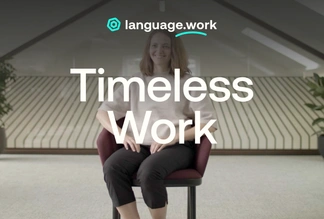
Navigating the new journey to vacation time
I remember in the mid-2000s when I took a vacation from work, I emailed a project status to the team, set up my automatic responder, said goodbye, and that was it. That shout farewell was the last communication I had with my workplace for a week.
Now if you look at today’s working world, vacation time has become something entirely different. That’s coming from the lack of traveling in the past year, the proliferation of hybrid and remote work, increased benefits (like PTO), and the rise and fall of hustle culture to mass resignations.
Let’s start with the obvious: our work and home lives have become blurred. So has our vacation and work time. We’ve been on a permanent staycation, but now it’s time to check out and check in to what time off looks like in a post-pandemic world.
Employees have a surplus of vacation time post-pandemic
In 2020, 92% of Americans canceled, postponed, or didn’t book a vacation due to the pandemic.
So we had a lot of vacation days piling up. Some companies had policies in place to carry over underutilized vacation. Others, like Condé Nast and Bank of America, changed their use-it-or-lose-it vacation policies to accommodate employees and the inability to physically go on vacation.
Now that vaccination rates are on the rise, there seems to be a push to get workers to use those backlog of days and take needed vacation time. It looks as though this is especially true in the technology industry, where companies such as Google and Cloudera are finding ways to ensure their teams take time off (rest time = better productivity).
What vacation time looks like for the distributed worker
The future of business travel remains a looming question as countries reopen for travelers. We’re sure to see a rise in post-pandemic vacations, with a newfound ability to balance work with leisure time thanks to remote and hybrid models.
This can be both positive and negative. For one, the ability to take longer family vacations and balance work with play is an appealing one for many reasons: extra time with family and friends, better deals for more extended stays, you get the gist. However, that completely turned-off vacation mindset is necessary for recharging and reducing burnout.
74% of Americans who are working from home said they’d consider taking a workcation — going on a vacation, but working while there. When a distributed worker goes on a workcation, there seems to be little difference between opening a laptop at a hotel desk versus at the kitchen table (side note: your editor is currently doing just that!).
Hotels are adding conveniences to attract these new workcationers. “Work From Hyatt” is one of such packages promoting staying plugged-in while enjoying a quasi-vacation. These offerings include WiFi, IT, and personal assistant teams — plus the known benefits of staying at a hotel. So when the workday has finished, you can leave your lounge/office chair for a dip in the pool.
The proliferation of workplace software, remote/hybrid working models, the pandemic, and our always-on-duty work culture has resulted in our ability to consistently balance work life with home life. These workcations are a continuation of that dynamic, but one that focuses on benefits to the knowledge worker rather than encroaching on home, family, and relaxation time that needs to happen for the average person to enjoy returning to work every day.
In its most flattering light, this balance is a win for knowledge workers because it presents the opportunity for us to take our work where we want. But it’s also important to establish the difference between a workcation and a true vacation so your employer and coworkers know what to expect from your time off/away/still-online-but-from-a-new-location.
What employers should expect moving forward
There is no longer a one-size-fits-all approach to vacation time. Employers will have to adapt their policies to meet the needs of their workforce. That may mean giving employees a nudge to log off and use their surplus days or a gentle reminder of the importance of a mental break to avoid burnout.
Here are some ways to encourage employees to take vacation time:
- Bring back TGIF
Summer Fridays usually entail taking the entire day off or leaving early on Fridays between Memorial Day and Labor Day. The concept isn’t new, but it is getting renewed consideration by companies this summer. 55% of businesses in North America offer Summer Fridays, which increase productivity, loyalty, and employee retention.
- Start at the top
Kristen Hayward, Head of People at email company Superhuman said, "a company's actual vacation policy is the everyday behavior that people see." Company culture impacts employees’ willingness to take a vacation. For example, a manager who checks in every hour from vacation may make team members feel they have to do the same. Encourage your executives to take an unplugged break and have them spread the word about it.
- Pay to play
It may sound a bit absurd, but some companies are giving employees a vacation bonus as part of their benefits. Buffer, Evernote, and Veracode give employees $1,000 to use on their vacations. Buffer even adds an extra $500 for each family member. And it works. 80% of Buffer’s workers collected their bonuses compared to just 36% who took a vacation in the year prior.
The concept of “fair” vacation policies is nuanced for every organization, depending on your size, work culture, and existing policies. For hybrid companies with employees worldwide, there are also cultural differences surrounding vacation time and the importance of taking a break. Whether your vacation policy is flexible or fixed, you should be connecting with your employees to ensure they feel the policy is fair and enables them to take time off. After this last year, we all need it.




